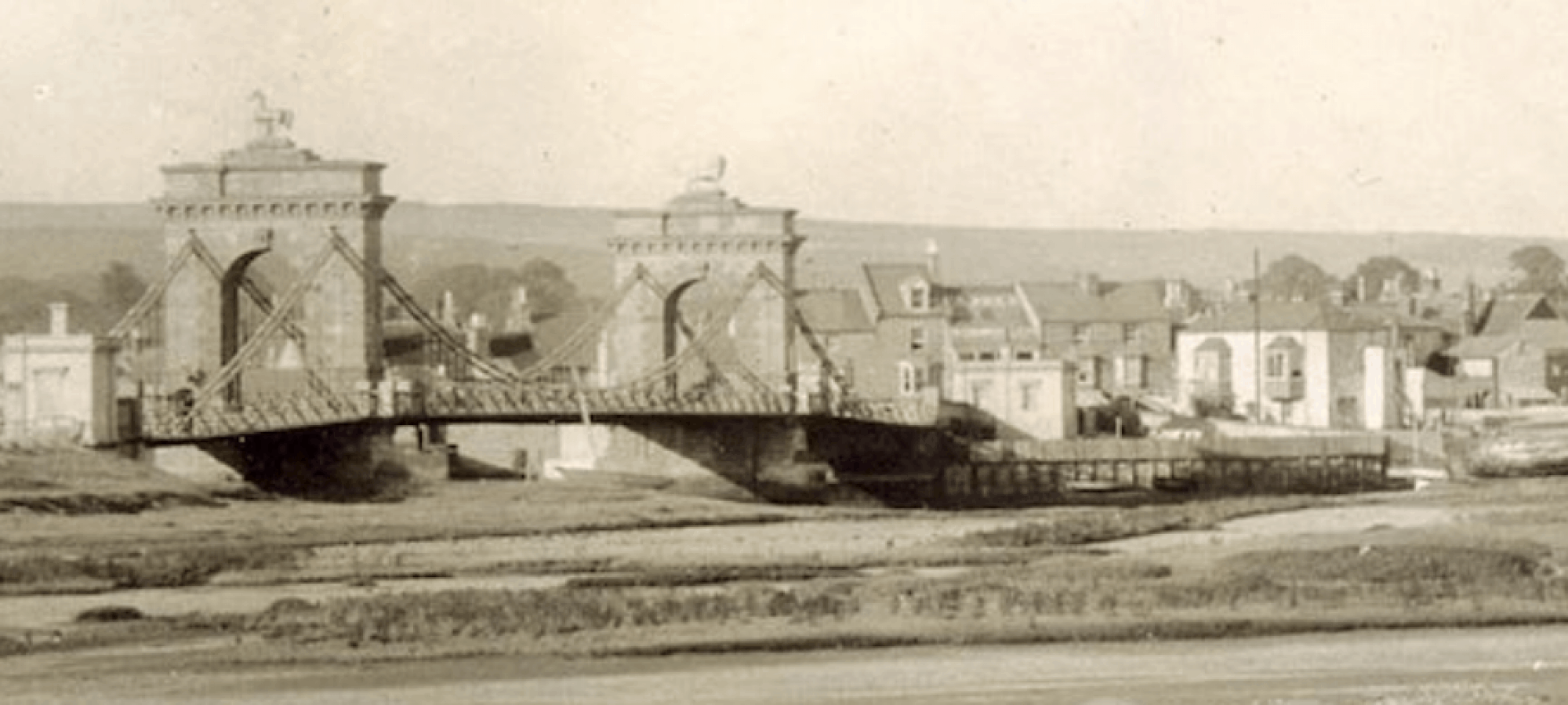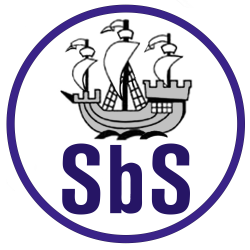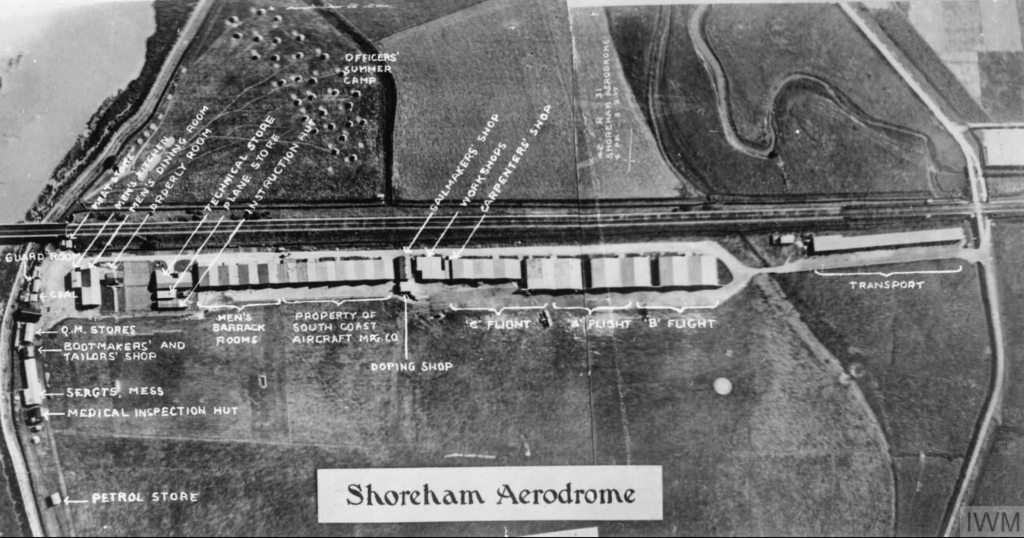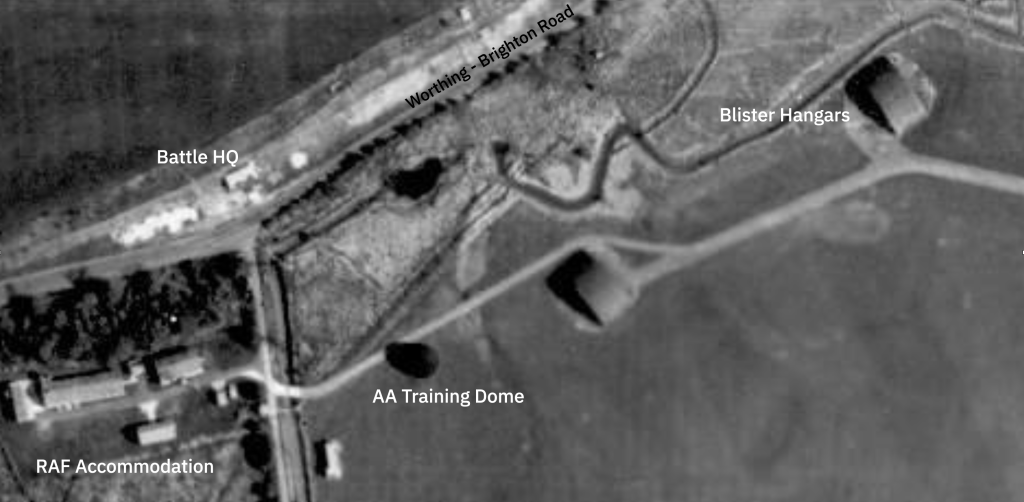Shoreham Airport – a timeline of development
This pdf map of the entire site shows the expansion and change of use of the fields over time from 1910 to 1950. Compiled from various sources and original research of Tim Webb “History of Shoreham Airport” Pub.1996
1910 – 1925
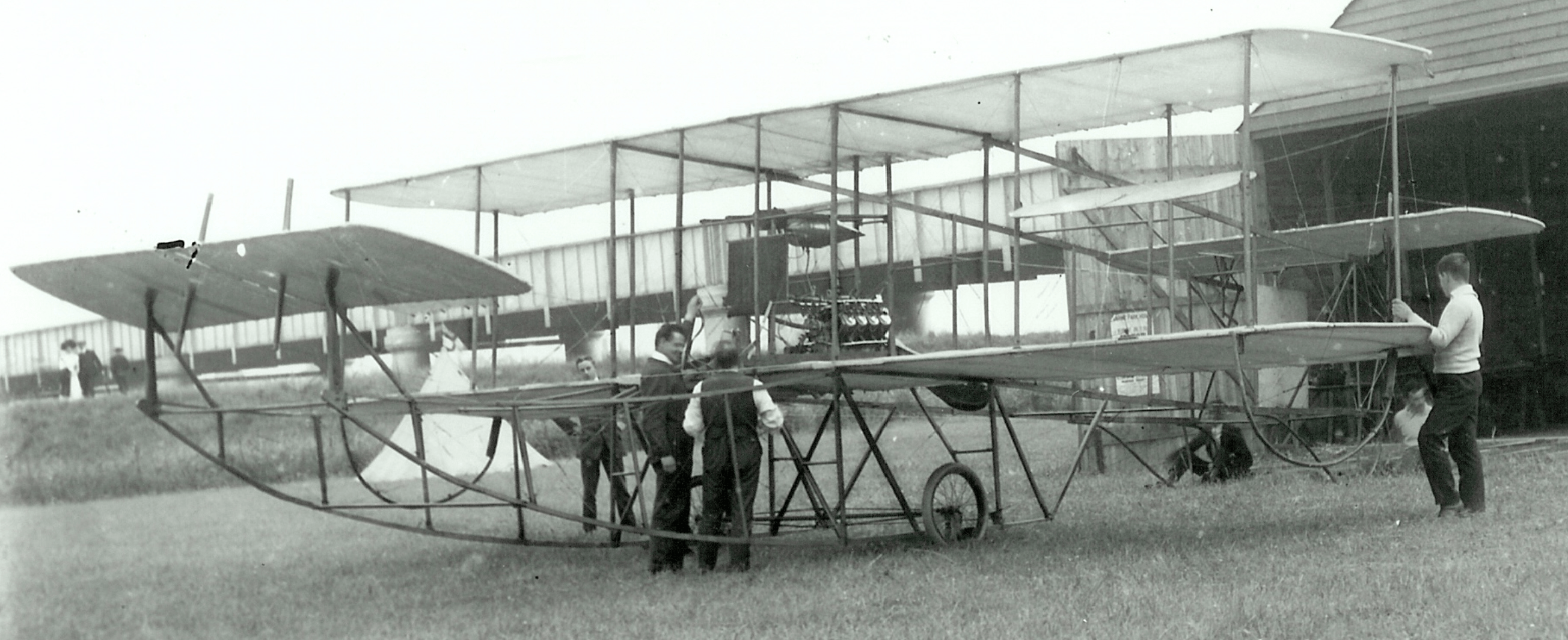
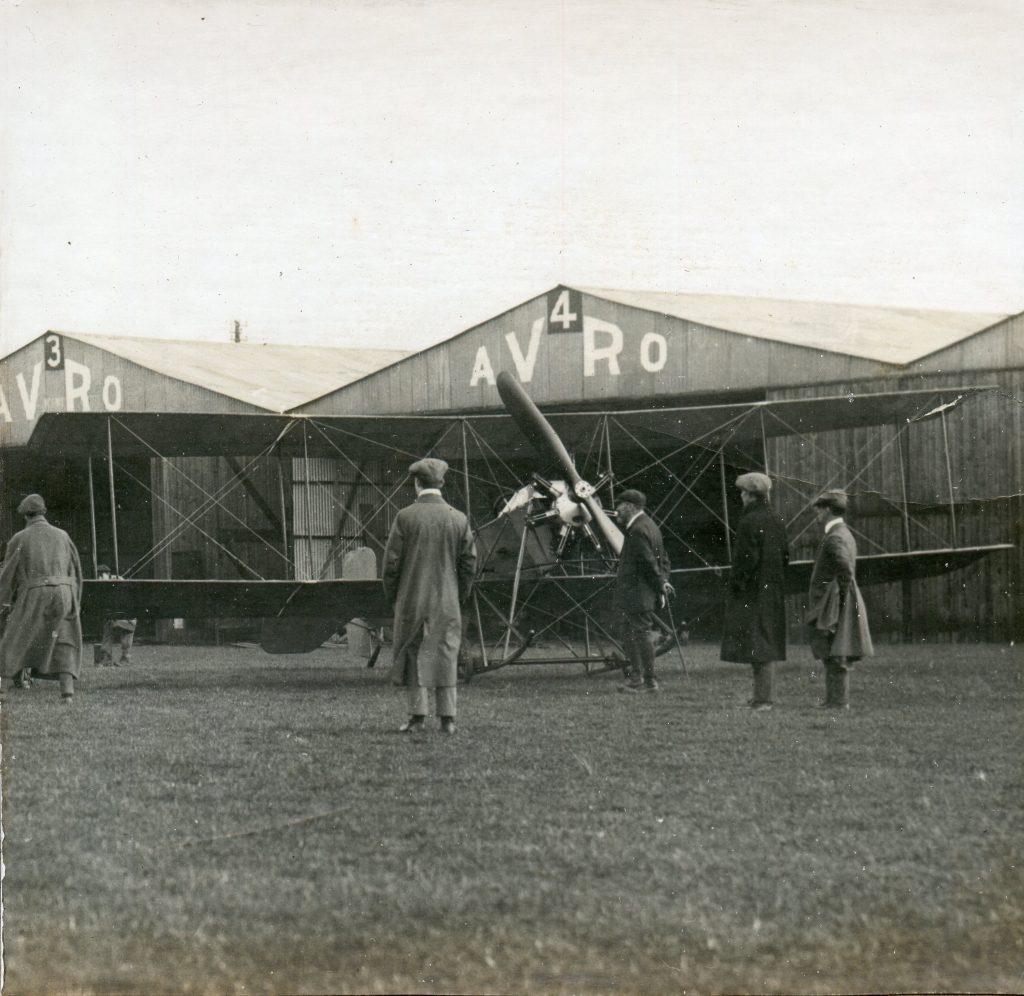
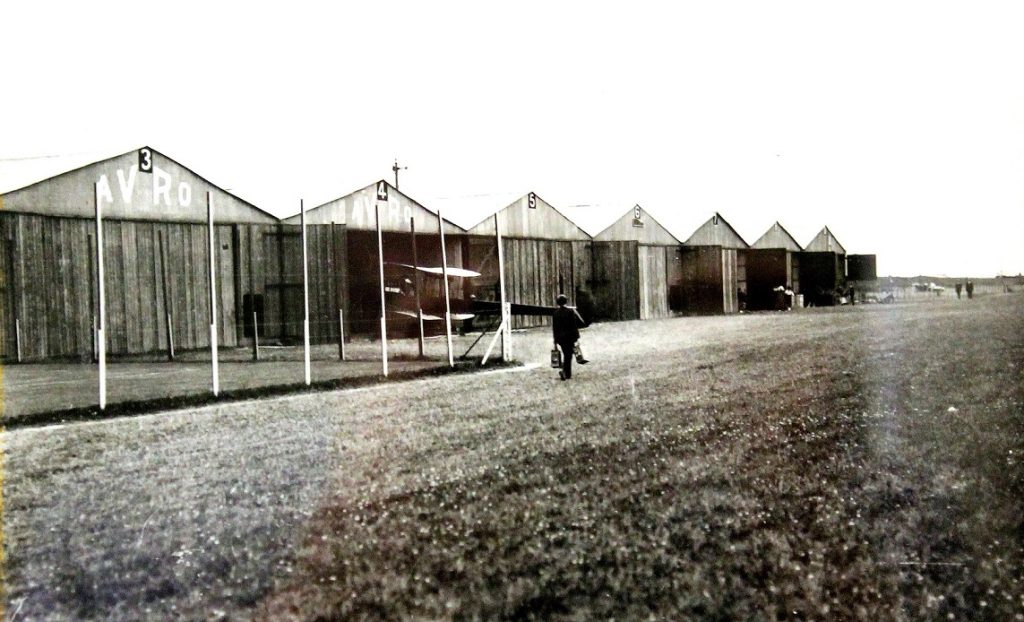
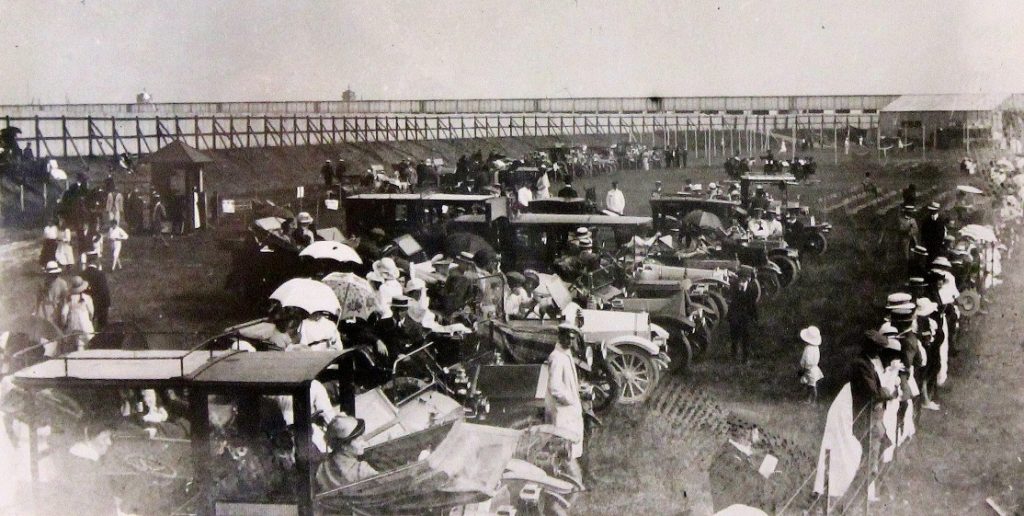
Shoreham airfield was used during the 1914-18 war as a Royal Flying Corp training base with No. 3 Training Squadron using Farmans, FE2s and eventually Avro 504s.
From 1921 the airfield reverted to cattle grazing.
1925 – 1926 Easter’s Field
Between 1925 and 1926 the field to the West of Salts Farm was home to the Sussex County Aero Club with construction of aircraft in the barn to the rear and flights in Easter’s Field. 1926 the Miles brothers from Portslade, joined forces with Cecil Pashley to form the Gnat Aero Company operating from wooden buildings on Easter’s Field.
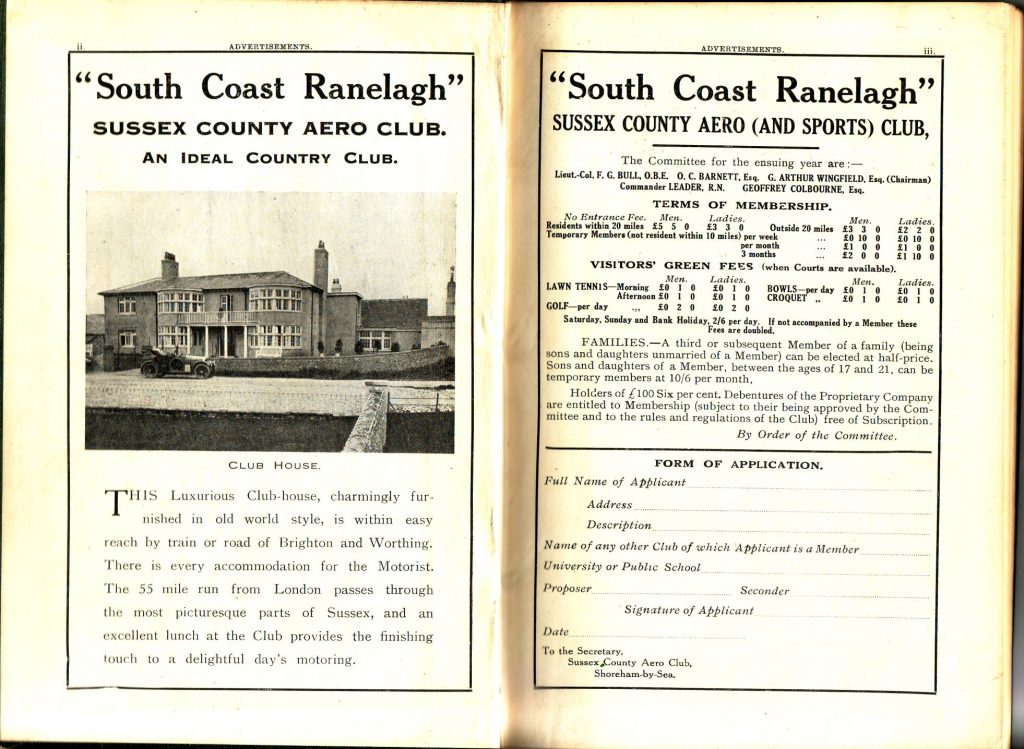
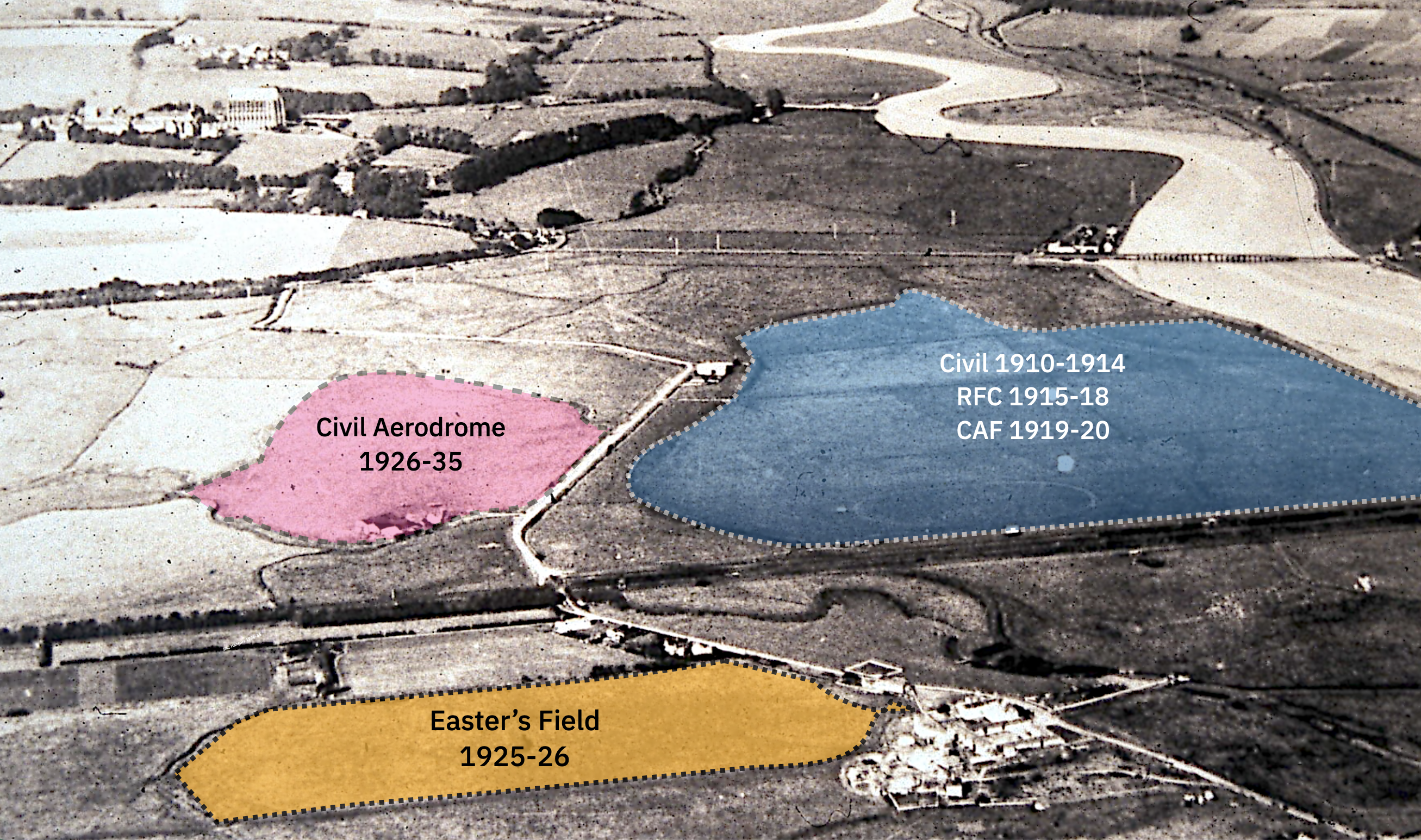
1926 – 1935 use of the Western field
As the Southern Aircraft Co. the Miles brothers had started to produce their own aircraft designs.
July 10th 1929 the Miles’ Southern Martlet took off from Shoreham.
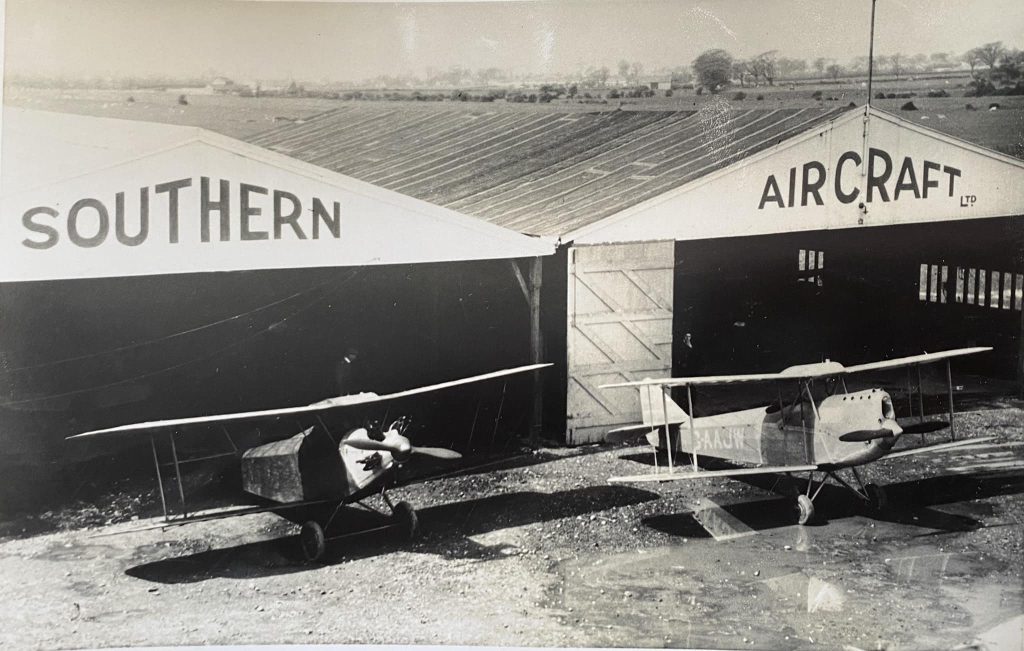
1930 Alan Cobham was engaged by the local authorities to survey possible airfield sites; he chose the original field that had been used until 1921. Brighton, Hove and Worthing Councils bought the land for the airfield. A sum of £31,000 was allocated for the construction of a terminal building and hangars.
1932 The first scheduled passenger services started with four flights a day.

1935 Construction of the new terminal was commenced to an art deco design by the architect R. Stavers Hessell Tiltman (designer of the Tudor House pub).
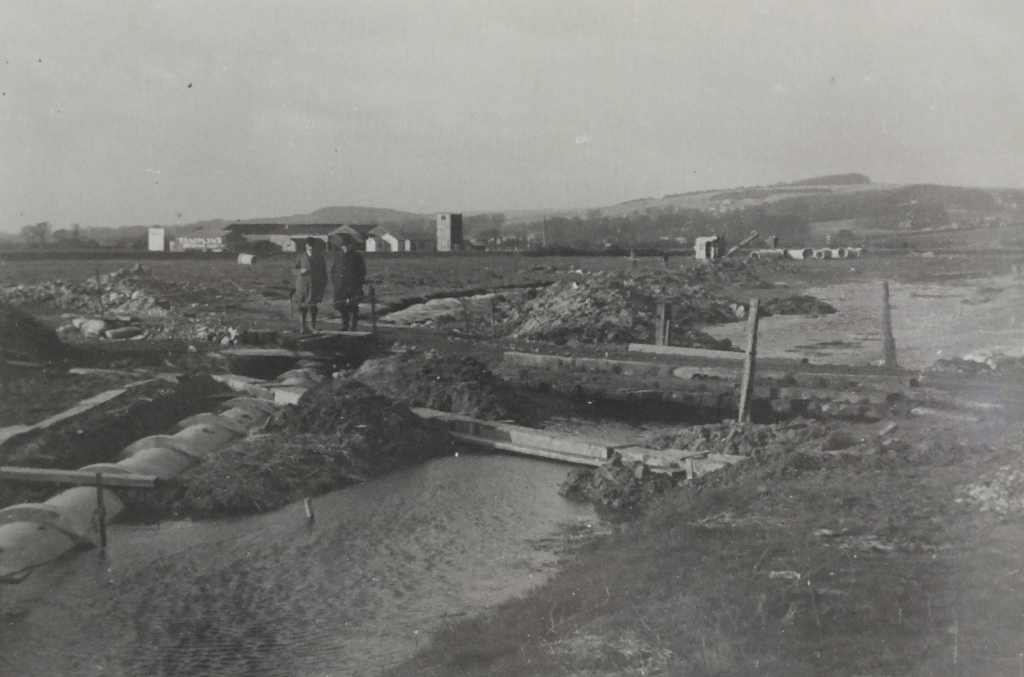
1935 – 1939 Municipal airport
1936 The new terminal building was officially opened 13 June 1936. The airfield would be named the Brighton, Hove and Worthing Municipal Airport, even though it was in Lancing and would be universally referred to as Shoreham Airport. Scheduled services expanded with flights to Bristol, Cardiff, Liverpool, Manchester, Jersey, Le Touquet and Deauville.
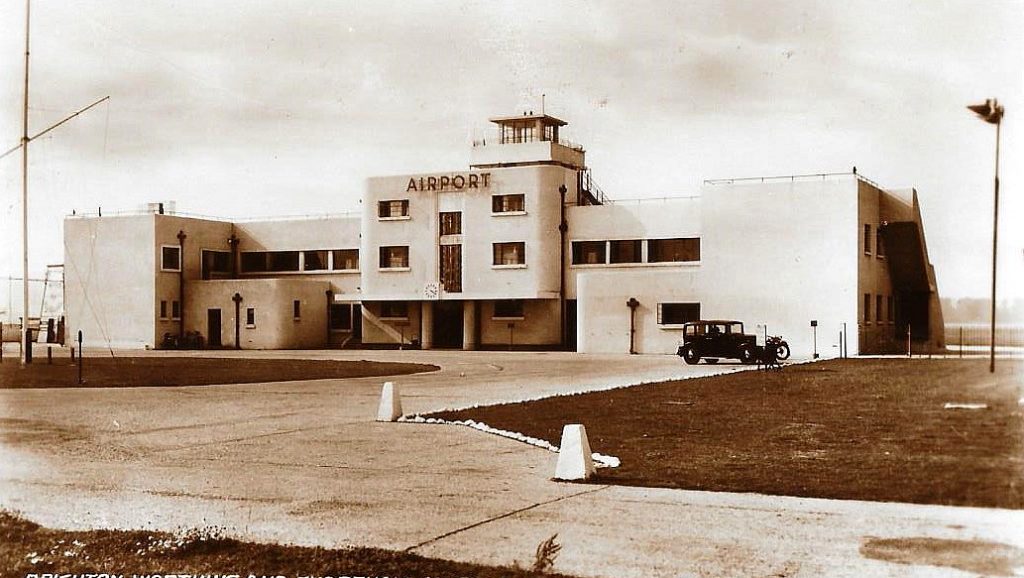
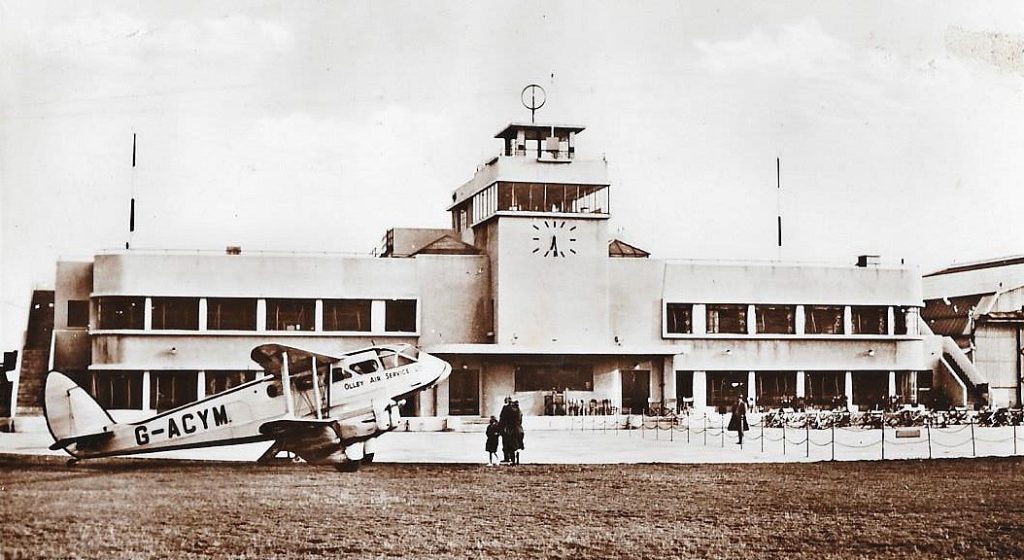
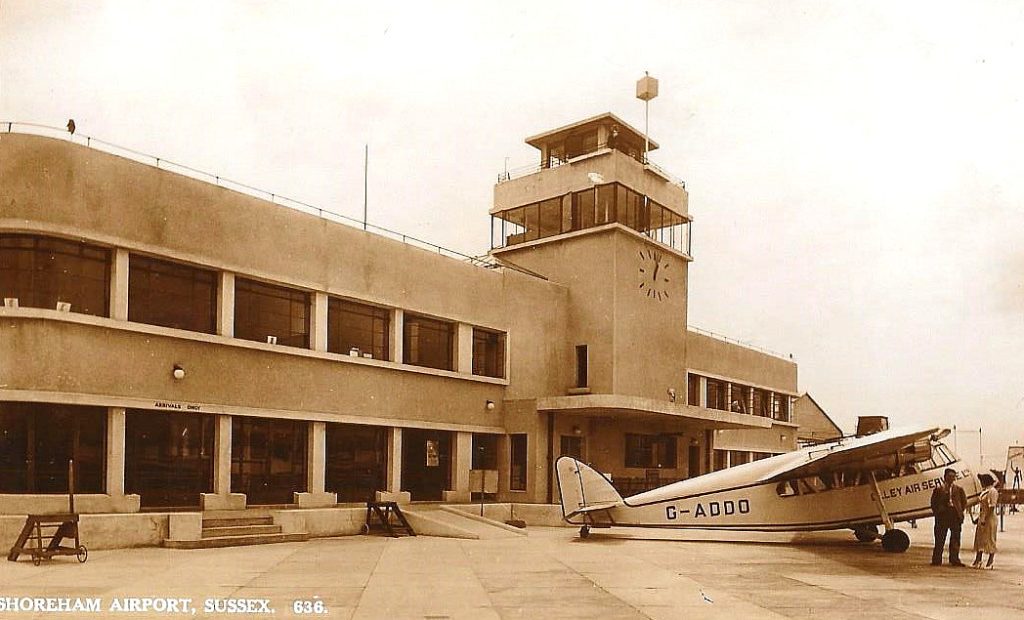
1940 – 1945 RAF use
1940 Shoreham was requisitioned by the RAF and used for anti-invasion patrols by 225 Squadron’s Lysanders; throughout the Battle of Britain Shoreham was used as an emergency landing ground.
1941 the airfield and runway was extended.
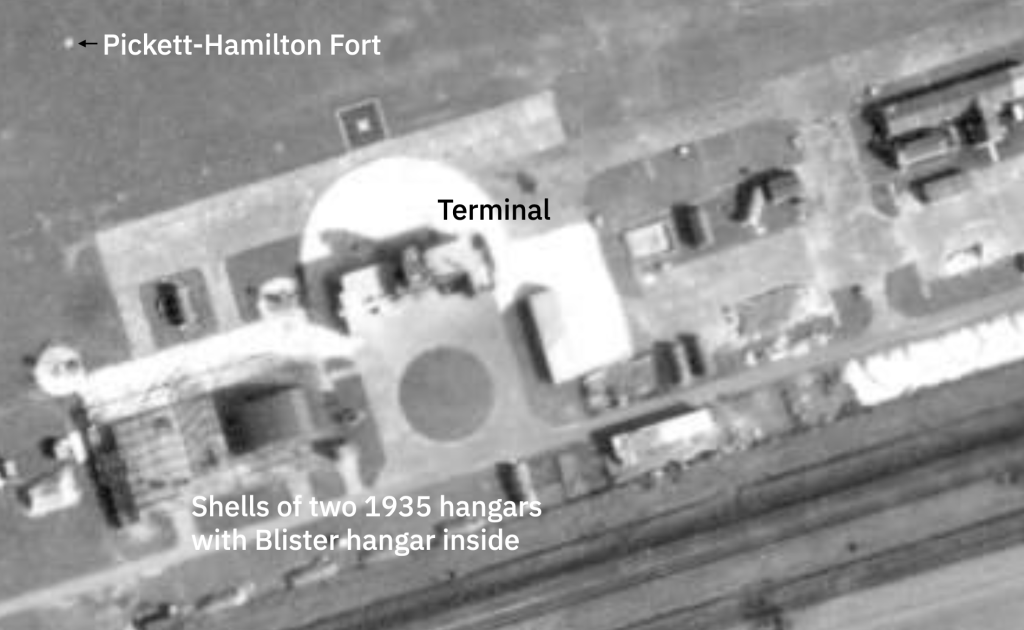
1945 – present Municipal airport
1948 Frederick Miles established his business at Shoreham to produce aircraft under the Miles name. The Miles brothers had leased the airfield for work on aviation contracts.
1960 The aviation business of F. G. Miles Ltd was acquired by the newly formed Beagle Aircraft Limited.
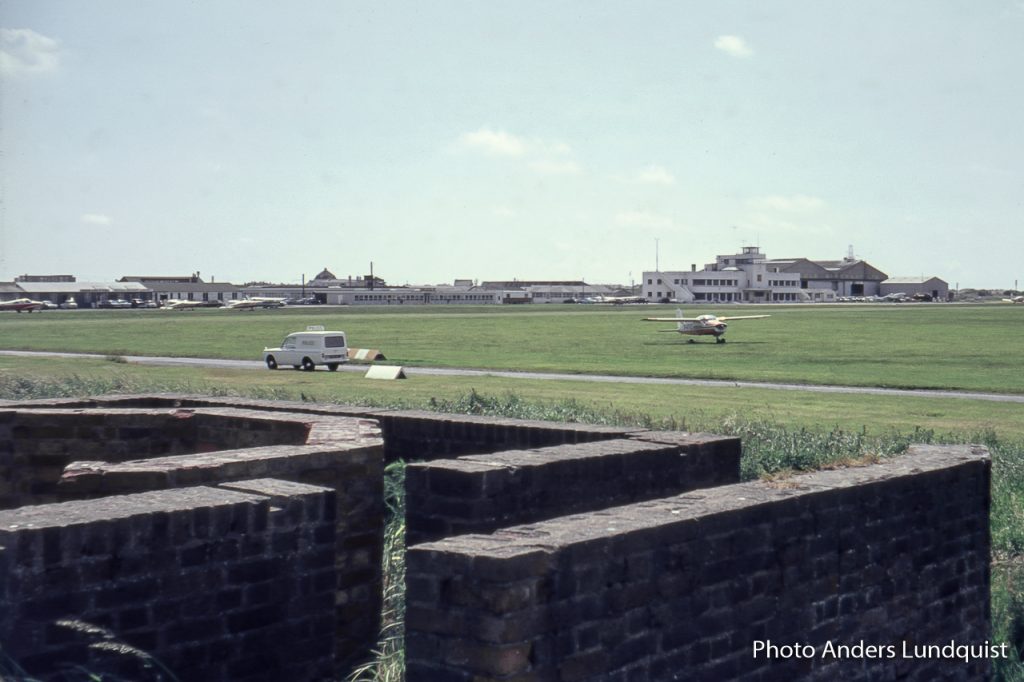
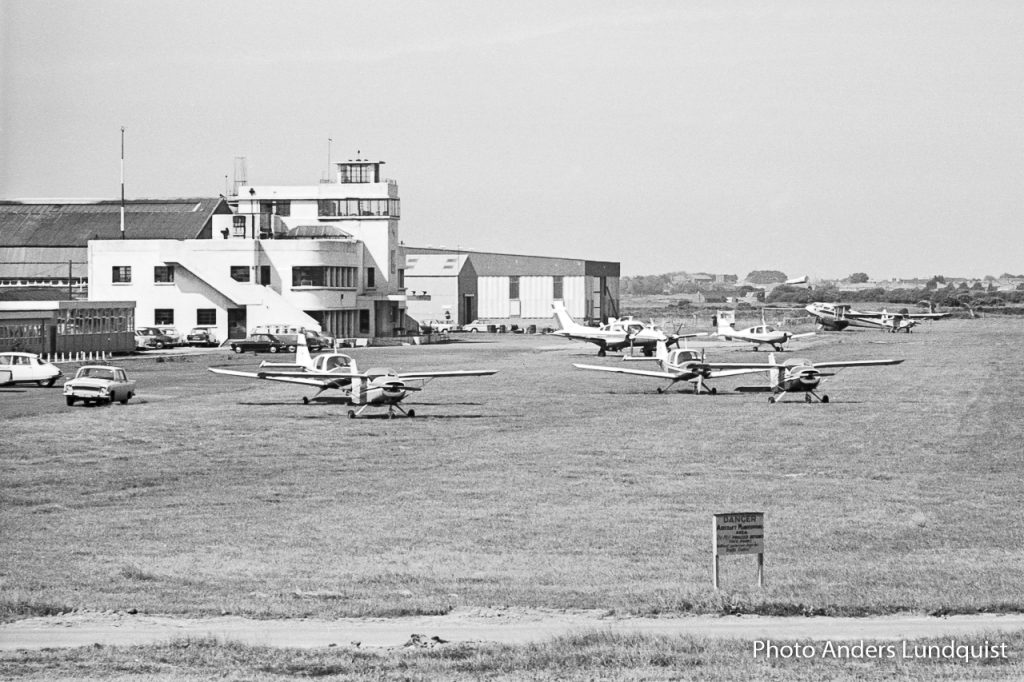
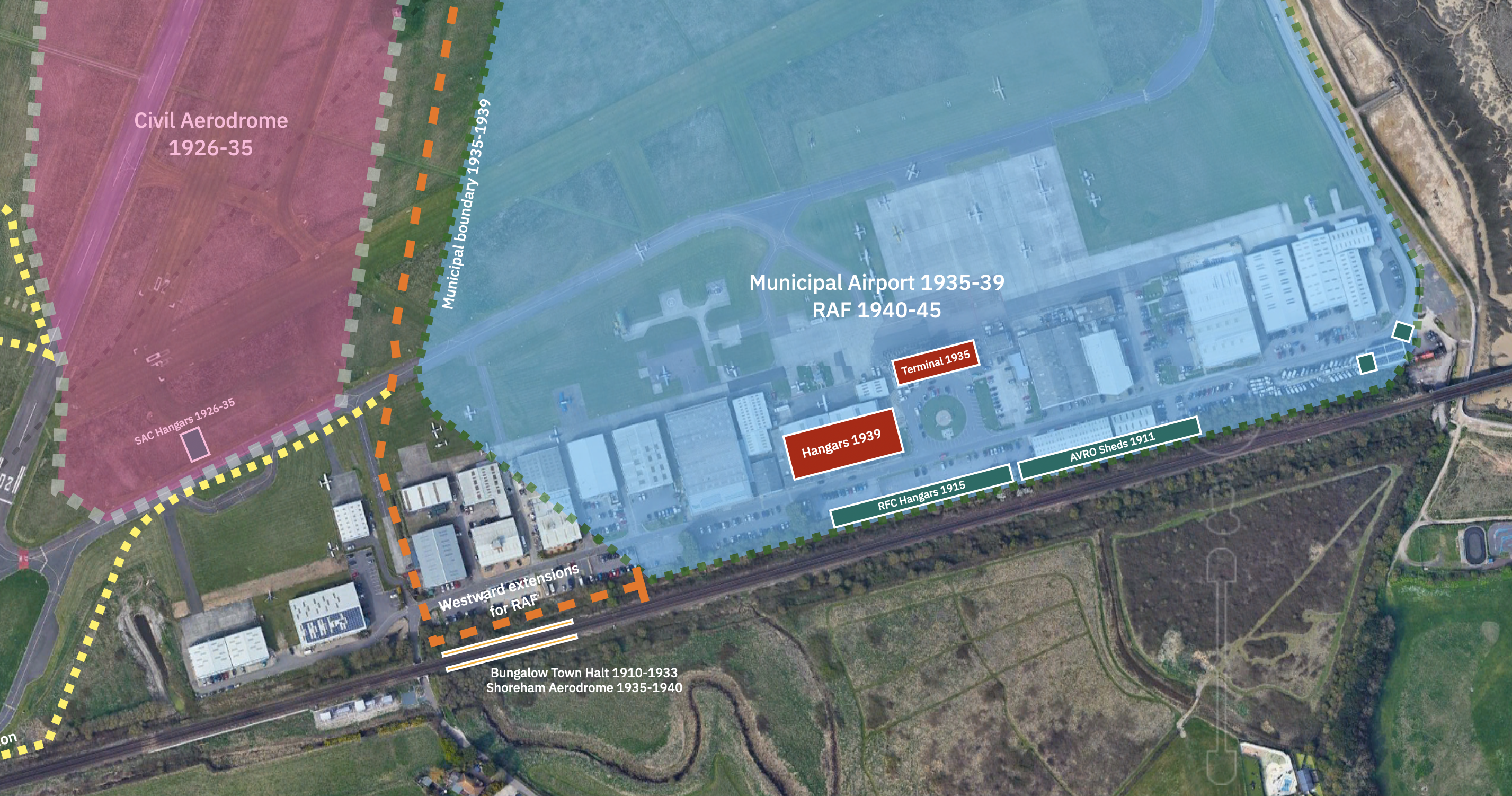
References:
Compiled from various sources and original research of Tim Webb “History of Shoreham Airport” Pub.1996
https://www.gracesguide.co.uk/Shoreham_Aerodrome
